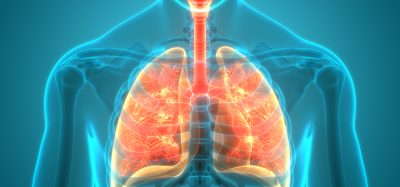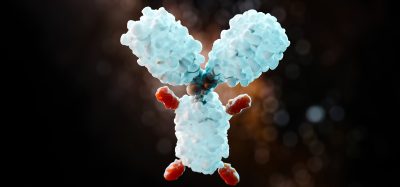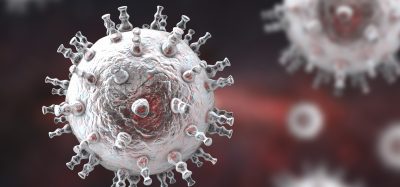Expanding accessible chemical space through automated high-throughput experimentation
Posted: 6 April 2021 | Dr Sam Liver (The Rosalind Franklin Institute) | No comments yet
Dr Sam Liver, Manager of the High-Throughput Molecular Discovery Laboratory at the Rosalind Franklin Institute, explains how lab automation in the form of machine learning and high‑throughput experimentation (HTE) can be implemented to enhance productivity in autonomous molecular discovery.
Abstract
Automation is harnessed routinely at individual stages within design-make-purify-test cycles, yet adjacent stages are rarely fully automated and integrated within drug discovery systems. Recently, however, progress has been made towards realising fully integrated molecular discovery workflows with matched‑ and high-throughput throughout. The combination of machine learning algorithms and automated HTE may deliver a step-change in both the efficiency and effectiveness of molecular discovery, ultimately helping to address the pharmaceutical sector’s grand challenge of increasing productivity. This article considers the prospect of integrating these capabilities to realise fully autonomous molecular discovery.
Molecular discovery challenges in drug discovery
Drug discovery is a time- and resource-intensive, multidimensional challenge,1 involving many stages: target discovery, hit generation, lead generation and lead optimisation. Lead generation and optimisation require iterative design-make-purify-test cycles that enable structure-function relationships to be enhanced. Despite how vital this is, efficiently exploring vast and diverse chemical spaces remains an overwhelming challenge in drug discovery.
The necessity to reliably synthesise small molecules for biological evaluation has resulted in a robust, yet limited, toolkit of reactions used in discovery workflows.2 The reliance on a narrow reaction toolkit often results in lipophilic compound series and has contributed to the unsystematic exploration of molecular scaffolds.3 Challenging biological targets, such as protein-protein interactions (PPI), are likely to need new classes of ligands and therefore require complementary synthetic strategies to be adopted.4,5
Automation and HTE for molecular discovery
Automation and HTE have become widespread in drug discovery and can improve efficiency at specific stages within the process.1 For example, high-throughput screening often provides starting points for drug discovery and the automated synthesis and purification of designed compounds is widely adopted. Within this context, the advantages of automation can include:
- miniaturisation of chemical synthesis to reduce the amount of material required
- more reliable and reproducible experimentation
- reduced design-make-purify-test cycle times.1
However, the fully integrated automation of all stages of design-make-purify-test cycles, with high- and matched-throughput throughout, has yet to be fully realised.1,4
Automation and HTE have become widespread in drug discovery and can improve efficiency at specific stages within the process”
Automated high-throughput reaction arrays have been exploited in different discovery contexts including compound library preparation,6 reaction discovery7 and reaction optimisation.8 HTE has received particular attention in the context of reaction optimisation, where it can add significant value to reaction classes by enabling a wider range of substrates to be used. The synthesis of designed compounds tends to require functionalised substrates which typically perform poorly during chemical synthesis. HTE can facilitate the exploration of multiple reaction parameters and aid in the identification of suitable conditions for the synthesis of each designed compound. It has allowed conditions to be identified for challenging reactions that harness the standard medicinal chemists’ toolkit and has also been exploited for other transformations such as photoredox catalysed reactions.4,8 Generally, no one set of reaction conditions is optimal for all combinations of substrate and the integration of reaction condition selection into discovery workflows can enable a greater proportion of designed target compounds to be prepared.
Although most stages within discovery workflows can be undertaken in parallel, analysis and purification often result in bottlenecks,9 partly because these activities are usually performed in series. Consequently, streamlined discovery workflows have been developed that require, at most, minimal purification steps that can be performed in parallel.
One such approach – nanoscale synthesis and affinity ranking – has been exemplified through the discovery of CHK1 inhibitors.10 This approach involved analysis of nanoscale reactions for the selection of appropriate reaction conditions, which enabled 345 of the 384 designed compounds to be prepared and subsequent evaluation of binding to the target protein performed by affinity selection‑mass spectrometry (AS-MS). The workflow enabled a much broader reaction space to be explored than would have been possible using any single set of reaction conditions. AS-MS enabled crude reaction products, with diverse mechanisms of action, to be rapidly assessed for binding and in future, this technique could be extremely valuable for addressing poorly druggable targets.11
HTE can facilitate the exploration of multiple reaction parameters and aid in the identification of suitable conditions for the synthesis of each designed compound”
Another approach – named activity-directed synthesis – involves the prioritisation of reactions solely on the basis of the function of corresponding product mixtures. Here, metal-catalysed carbenoid chemistry has been harnessed in the discovery of novel androgen receptor agonists and inhibitors of the PPI p53/hDM2.12 The chemistry was deliberately chosen because of the diversity of possible reaction outcomes and the potential to explore multiple compounds series in parallel. The ability to assess rapidly the biological function of arrays of reactions can significantly reduce the length of each discovery cycle. The iterative nature of activity-directed synthesis may allow it to be transformed into a fully autonomous molecular discovery approach.
Data-driven discovery
HTE combined with data science has been harnessed to help address challenges relevant to the individual stages of drug discovery: hit identification,13 the prediction of reaction outcomes14 and the optimisation of challenging reactions.15 Such tools might be harnessed to realise fully autonomous ‘hands-free’ molecular discovery.16-19 For such tools to be useful, it is necessary to reliably secure large datasets; to efficiently optimise multi-parameter problems; to reduce iterative cycle times; and to generate new machine-driven hypotheses.16
The closed loop discovery of ABL1 kinase inhibitors integrated flow synthesis, purification and biological evaluation – all of which were performed in series.20 Datasets were used to build an active learning model, which was refined as new molecules were synthesised and tested. The model guided the exploration of chemical space and enabled non-exhaustive structure‑activity relationship (SAR) studies to be performed. However, the searched chemical space was relatively small; in total, 90 out of 270 possible compounds were prepared using the Sonogashira reaction. A major challenge will be to extend closed-loop approaches to enable the exploration of much more extensive regions of chemical space – this may require multiple different chemistries and/or multi-step syntheses to be automated.
Outlook
 Important progress has been made in addressing the challenges associated with fully autonomous drug discovery. For example, machine learning tools have been developed that may expand the chemical space available for bioactive molecular discovery. However, the realisation of fully autonomous discovery approaches with high- and matched-throughput throughout is still a significant outstanding challenge.
Important progress has been made in addressing the challenges associated with fully autonomous drug discovery. For example, machine learning tools have been developed that may expand the chemical space available for bioactive molecular discovery. However, the realisation of fully autonomous discovery approaches with high- and matched-throughput throughout is still a significant outstanding challenge.
One of the goals of The Rosalind Franklin Institute (the Franklin) in the UK is to increase the efficiency and effectiveness of discovery workflows. The Franklin is currently establishing a laboratory with high-throughput synthesis, analysis, purification and assay capabilities. The laboratory design is deliberately flexible so that wholly novel approaches for molecular discovery may be developed, particularly those that enable large regions of diverse chemical space to be explored. By providing an environment for deep collaboration between scientists with expertise in HTE, data science, life science technologies and biomedical science, we may enable disruptive molecular discovery approaches to become a reality.
About the author
Dr Samuel Liver is the Manager of the High-Throughput Molecular Discovery Laboratory at the Rosalind Franklin Institute. He completed his PhD in Organic Chemistry at the University of Leeds under the supervision of Professor Adam Nelson and Dr Stuart Warriner. His PhD research focused on establishing high-throughput protocols for bioactive small molecule discovery. Sam is currently establishing a high-throughput discovery laboratory at the Rosalind Franklin Institute where he will work collaboratively with academic and industrial researchers to transform bioactive molecular discovery approaches.
References
- Schneider G. Automating drug discovery. Nat Rev Drug Discov. 2018;17(2):97–113.
- Boström J, Brown DG, Young RJ, Keserü GM. Expanding the medicinal chemistry synthetic toolbox. Nat Rev Drug Discov. 2018;17(10):709–27.
- Langdon SR, Brown N, Blagg J. Scaffold Diversity of Exemplified Medicinal Chemistry Space. J Chem Inf Model [Internet]. 2011 Sep 26;51(9):2174–85. Available from: https://onlinelibrary.wiley.com/doi/abs/10.1002/9783527665143.ch03.
- Chow S, Liver S, Nelson A. Streamlining bioactive molecular discovery through integration and automation. Nat Rev Chem [Internet]. 2018;2(8):174–83. Available from: http://dx.doi.org/10.1038/s41570-018-0025-7.
- Scott DE, Bayly AR, Abell C, Skidmore J. Small molecules, big targets: Drug discovery faces the protein-protein interaction challenge. Nat Rev Drug Discov. 2016;15(8):533–50.
- Li J, Ballmer SG, Gillis EP, Fujii S, Schmidt MJ, Palazzolo AME, et al. Synthesis of many different types of organic small molecules using one automated process. Science (80- ) [Internet]. 2015 Mar 13;347(6227):1221–6. Available from: https://www.sciencemag.org/lookup/doi/10.1126/science.aaa5414.
- Collins KD, Gensch T, Glorius F. Contemporary screening approaches to reaction discovery and development. Nat Chem [Internet]. 2014;6(10):859–71. Available from: http://dx.doi.org/10.1038/nchem.2062.
- Krska SW, DiRocco DA, Dreher SD, Shevlin M. The Evolution of Chemical High-Throughput Experimentation to Address Challenging Problems in Pharmaceutical Synthesis. Acc Chem Res. 2017;50(12):2976–85.
- Grainger R, Whibley S. A Perspective on the Analytical Challenges Encountered in High-Throughput Experimentation. Org Process Res Dev. 2021.
- Gesmundo NJ, Sauvagnat B, Curran PJ, Richards MP, Andrews CL, Dandliker PJ, et al. Nanoscale synthesis and affinity ranking. Nature. 2018;557(7704):228–32.
- Prudent R, Annis DA, Dandliker PJ, Ortholand JY, Roche D. Exploring new targets and chemical space with affinity selection-mass spectrometry. Nat Rev Chem [Internet]. 2021;5(1):62–71. Available from: http://dx.doi.org/10.1038/s41570-020-00229-2.
- Karageorgis G, Liver S, Nelson A. Activity-Directed Synthesis: A Flexible Approach for Lead Generation. ChemMedChem. 2020;15(19):1776–82.
- Dreiman GHS, Bictash M, Fish P V., Griffin L, Svensson F. Changing the HTS Paradigm: AI-Driven Iterative Screening for Hit Finding. SLAS Discov. 2021;26(2):257–62.
- Coley CW, Barzilay R, Jaakkola TS, Green WH, Jensen KF. Prediction of Organic Reaction Outcomes Using Machine Learning. ACS Cent Sci. 2017;3(5):434–43.
- Shields BJ, Stevens J, Li J, Parasram M, Damani F, Alvarado JIM, et al. Bayesian reaction optimization as a tool for chemical synthesis. Nature [Internet]. 2021;590(7844):89–96. Available from: http://dx.doi.org/10.1038/s41586-021-03213-y.
- Schneider P, Walters WP, Plowright AT, Sieroka N, Listgarten J, Goodnow RA, et al. Rethinking drug design in the artificial intelligence era. Nat Rev Drug Discov [Internet]. 2020;19(5):353–64. Available from: http://dx.doi.org/10.1038/s41573-019-0050-3.
- Coley CW, Eyke NS, Jensen KF. Autonomous Discovery in the Chemical Sciences Part II: Outlook. Angew Chemie – Int Ed. 2020;59(52):23414–36.
- Coley CW, Eyke NS, Jensen KF. Autonomous Discovery in the Chemical Sciences Part I: Progress. Angew Chemie – Int Ed. 2020;59(51):22858–93.
- Vamathevan J, Clark D, Czodrowski P, Dunham I, Ferran E, Lee G, et al. Applications of machine learning in drug discovery and development. Nat Rev Drug Discov [Internet]. 2019;18(6):463–77. Available from: http://dx.doi.org/10.1038/s41573-019-0024-5.
- Desai B, Dixon K, Farrant E, Feng Q, Gibson KR, Van Hoorn WP, et al. Rapid discovery of a novel series of Abl kinase inhibitors by application of an integrated microfluidic synthesis and screening platform. J Med Chem. 2013;56(7):3033–47.
Related topics
Artificial Intelligence, Drug Development, Drug Discovery, High-Throughput Screening (HTS), Informatics, Lab Automation, Screening
Related organisations
HighRes Biosolutions, The Rosalind Franklin Institute







